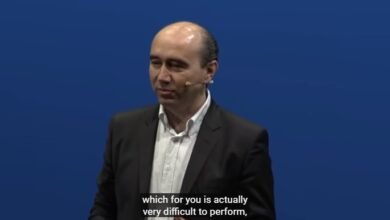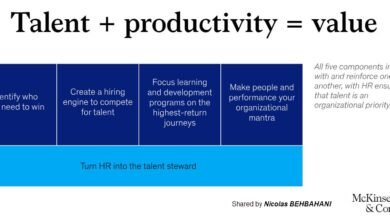
By | Sreekanth K Arimanithaya | Global Talent and Enablement Services Leader, EY Global Delivery Services
Digital transformation is a frequently used catchword that encapsulates the digitization of processes, data, industries, organizations and work. As hybrid and remote work turn into paradigm shifts prompted by COVID-19, remote work technology is shaping this transition.
Given that customer expectations are also growing, global organizations need to be ready! No matter where we are in the world, we need to transform our work place in order to keep up.
One of the biggest benefits of a hybrid work model is that it allowed me to work from there, and allows you to work from anywhere! And such digital technologies have helped digital nomads turn into location-agnostic remote workers.
Digital is definitely a way of working, but it is also what we do every day. Let’s divide the concept of digital into the following broad buckets:
1. Technology – I and my colleagues Subish and Shailendra at EY GDS reviewed the problem statements and solutions of Hackpions 3.0. In the first edition of this hackathon, we started with concepts like RPA, Blockchain and gradually moved to 3D Printing and Machine Learning. The event has been shifting fast, thanks to the upcoming emerging technologies and the high adoption rate of digital.
2. Methodology – I’ve worked with many corporates like Toyota Motors, DXC, EY, and with customers across industries. What I gathered over the past 20 years is that the definition of digital is changing swiftly, encompassing everything from Lean, Six Sigma, Agile, microservice-based architecture to design thinking, AR/VR and more.
3. Behaviors – Digital ideas are implemented for the simplicity of processes. So they are integral to the transformative behavior that leaders need to adopt in their overall digital journey.
In a nutshell, digitalization = technology + methodology + behavior.
How to keep learning, while doing what we do best?
As part of progressive companies, leaders need to transform their mindset to ensure a smooth digital journey. Besides, digitization is also a function of adaptability, curiosity, flexibility, agility, creativity, digital dexterity and teaming of individuals.
I am proud to say that at GDS ES, we have portrayed all these behaviors across our journey, and also in our daily lives. Cultivating these attributes is critical, while today’s leaders should be open to the idea of continuous learning and unlearning. Within our working hours, how can we figure opportunities to pick new skills? The way we learn while also applying skills that we’ve mastered is also very important. Similarly, unlearning is equally important.
A story close to my heart
That reminds me of the story where a Buddhist monk approaches a Jain monk to learn all about the latter’s faith, and then gets invited to a tea party. Over the tea, the Jain monk keeps pouring into an already filled cup and that’s when the Buddhist monk says, “Why do you keep pouring when you see that the cup is overflowing?” Then the Jain monk says, “Now you know that I have to drink or throw tea out of this cup to make room for fresh tea! Similarly, in order to learn new concepts, you have to ring out the old and ring in the new!” This story is so relatable!
Our biases, prejudices and fixed ways of thinking stall our growth. Habit has to be broken. You have to constantly unlearn and approach every opportunity to solve problems like a child. Here are some ways to help you do it.
Method 1: The practical problem solving (PPS) methodology
When I was with Toyota about 25 years ago, our Japanese leaders brought in the PPS methodology. It was all about solving problems with an open mind, instead of using experiences and titles. We were encouraged to be as curious as a child and happily learn from our subordinates. Such a practical problem-solving methodology and mindset stands true even today.
Method 2: Being flexible and meeting demands with digital ways of thinking
Flexibility arises when one partners with the ecosystem, and eventually evolves or stays curious about emerging tech. It is critical to ask better questions, and seek better answers continually to help build a better working world.
Method 3: Moving continuously to beat ambiguity
Moving objects can always change direction. Today we are grappling with more data and newer problems than ever before. So adapt, learn and always be open to change.
Method 4: Learn to collaborate
Every opportunity gives rise to a bouquet of new possibilities. Hence, collaboration among teams, service lines, vendors, government, customers and societies is critical every step of the way.
While digital rises from the holistic unification of technology, methodology and technology, it also creates unique experiences for customers, employees and communities. I hope you echo my sentiments and agree with this. If not, I’d be happy to know your thoughts in the comments!
Republished with permission and originally published at Sreekanth K Arimanithaya’s LinkedIn






